Cal-IPC Projects

2025 Cal-IPC Symposium, Nov. 12-15
Join us in Ventura or Online, November 12-15, for another dynamic gathering of California land mangers to network, learn, and celebrate our hard work! The Symposium will be held at the Ventura Beach Marriott, a small town oasis only two blocks from San Buenaventura State Beach and minutes from downtown - or join streaming Online.
...Read More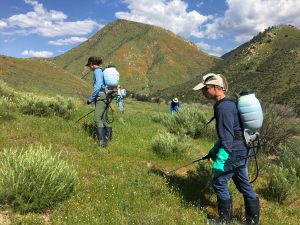
Safe and effective herbicide use
When used properly, herbicides can be a useful tool in the integrated weed management toolbox. Cal-IPC and the California Department of Pesticide Regulation (DPR) are working together to provide the best guidance for safe and effective herbicide use - to protect sensitive habitat, wildlife, and the people who work and play in California’s wildlands. Our goal is to provide land managers, restoration specialists, and other users with information on the situational effectiveness of all control methods, herbicide and non-herbicide, to guide...Read More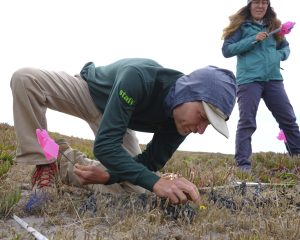
Protecting Central Coast Habitat
Invasive plants can pose a threat to rare plant populations, but to date there has been little research in California to determine which weeds most threaten each rare plant population. Cal-IPC, in partnership with the Santa Barbara Botanic Garden (SBBG), received a Section 6 grant from the California Department of Fish and Wildlife (CDFW) to support the recovery of federally listed rare plant species along the Central Coast of California by studying the impacts of invasive plants. This grant supports both a Central Coast-wide assessment of invasive plant threat for 50 federally listed rare pla...Read More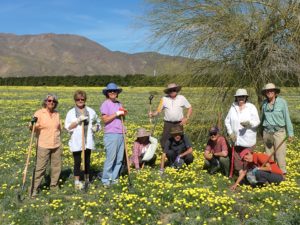
Desert Knapweed Containment
Volutaria tubuliflora, or desert knapweed, is a plant from north Africa that has recently been found in California. These are the only known sites in North America. There are two small sites on the coast in San Diego County and Orange County, and a major infestation in Borrego Springs, 50 miles inland in the Sonoran Desert. This infestation has spread over 15 square miles, and range modeling shows that desert knapweed would find suitable conditions across the American Southwest. In the 2016 superbloom, partners mapped and removed populations across the area during the January to April...Read More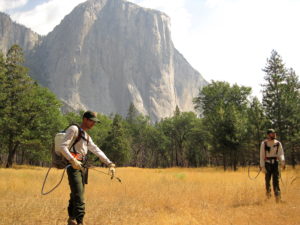
Protecting Sierra Tree Mortality Zones
Cal-IPC, in cooperation with the California Dept. of Food and Agriculture and county Agricultural Commissioners in the Central Sierra, is working to control invasive plants that threaten to spread into areas with extensive tree mortality. Drought conditions have enabled native bark beetles to kill millions of trees in the region, making it more important than ever to control invasive plant populations which can spread into disturbed areas (more information on tree mortality in the Sierra). To support prio...Read More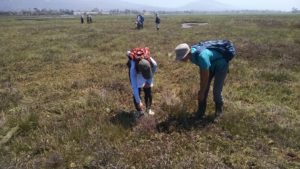
South Central Coast Eradication
This project targets five invasive plant species for region-wide eradication in the South Central Coast region (San Luis Obispo and Santa Barbara counties): Canada thistle, Russian wheatgrass, Japanese dodder, Dalmation toadflax and European sea lavender. Eradication is the gold standard of invasive plant control because it means the threat from that species has been eliminated (unless the species is re-introduced to the region). It is more effective and more cost-effective than long-term ongoing containment. The species in this effort were prioritized through a comprehensive assessment with r...Read More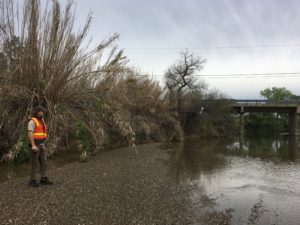
Arundo Mapping
Arundo donax, or giant reed, is one of the most damaging invasive plants in California. Its dense canes crowd riparian areas, destroying wildlife habitat and consuming extra water. Major removal projects have been undertaken in many coastal watersheds, including the Santa Ana River in southern California, and the Salinas River on the central coast. In 2008-2010, Cal-IPC undertook mapping Arundo in coastal watersheds from Mexico to Monterey to support removal efforts. As part of Proposition 1 funding to...Read More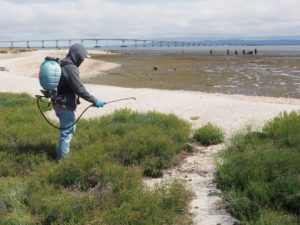
SF Bay Sea Lavender Control
Cal-IPC and partners, including the US Fish & Wildlife Service prioritized Algerian sea lavender (Limonium ramosissimum) and European sea lavender (L. durisculum) as top management priorities to protect San Francisco Bay tidal marshes and wildlife like endangered Ridgway’s rails. Few weed species can grow in salt marsh habitat, but invasive sea lavender thrives, putting out up to 130,000 seeds per square meter which can then float to new locations. Cal-IPC secured grant funding beginning in 2016 to delimit the extent of invasive sea lavender around the Bay and team w...Read More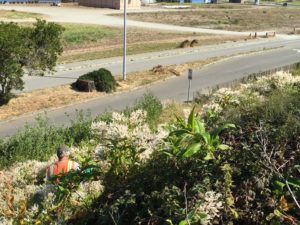
Northcoast Knotweed Eradication
Invasive giant knotweeds routinely make the list of the worst invasive species in the world. They have wreaked havoc in western Oregon and Washington, taking over riparian areas. There are only a handful of infested areas in California, and the main challenge is on the north coast, in Humboldt and Del Norte counties. Multiple species of knotweed, including Japanese knotweed (Fallopia japonica), giant knotweed (F. sachalinensis) and Himalayan knotweed (Periscaria wallichii) are found in the region, at about 100 sites in all. Knotweeds are notoriously difficult to get...Read More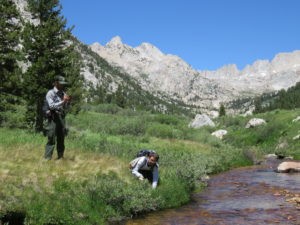
Sierra Nevada Meadows Protection
Sierra Nevada meadows are valued for their ecosystem functions, regulating water storage and flow, and providing important wildlife habitat. Invasive plants can significantly alter vegetation communities, degrade wildlife habitat, and potentially reduce water storage and carbon sequestration functions. Our project improves understanding of these impacts and strengthens capacity to effectively address the threat. The primary activity of this project is characterizing the level of threat in Sierra meadows from invasive plants through development of a “Read More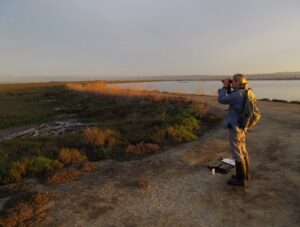
Invasive Spartina Project
Pacific cordgrass (Spartina foliosa) is a major component of tidal marsh vegetation in San Francisco Bay, which historically covered thousands of acres across the region. In the 1970s, the Army Corps of Engineers introduced Atlantic cordgrass (Spartina alterniflora) to the Bay, which hybridized with its native cousin. The hybrids expanded aggressively across lower tidal mudflats and tidal ...Read More
